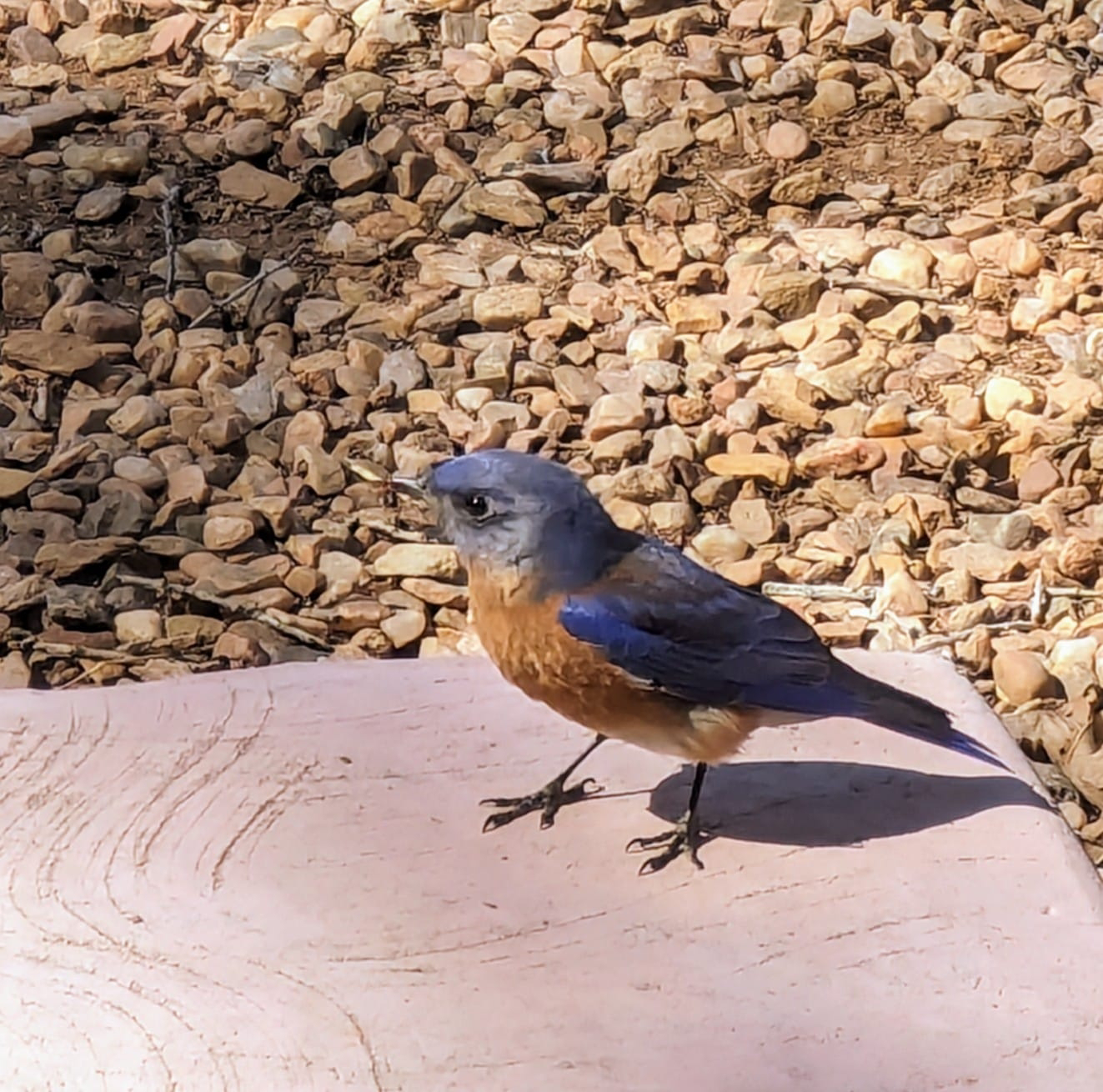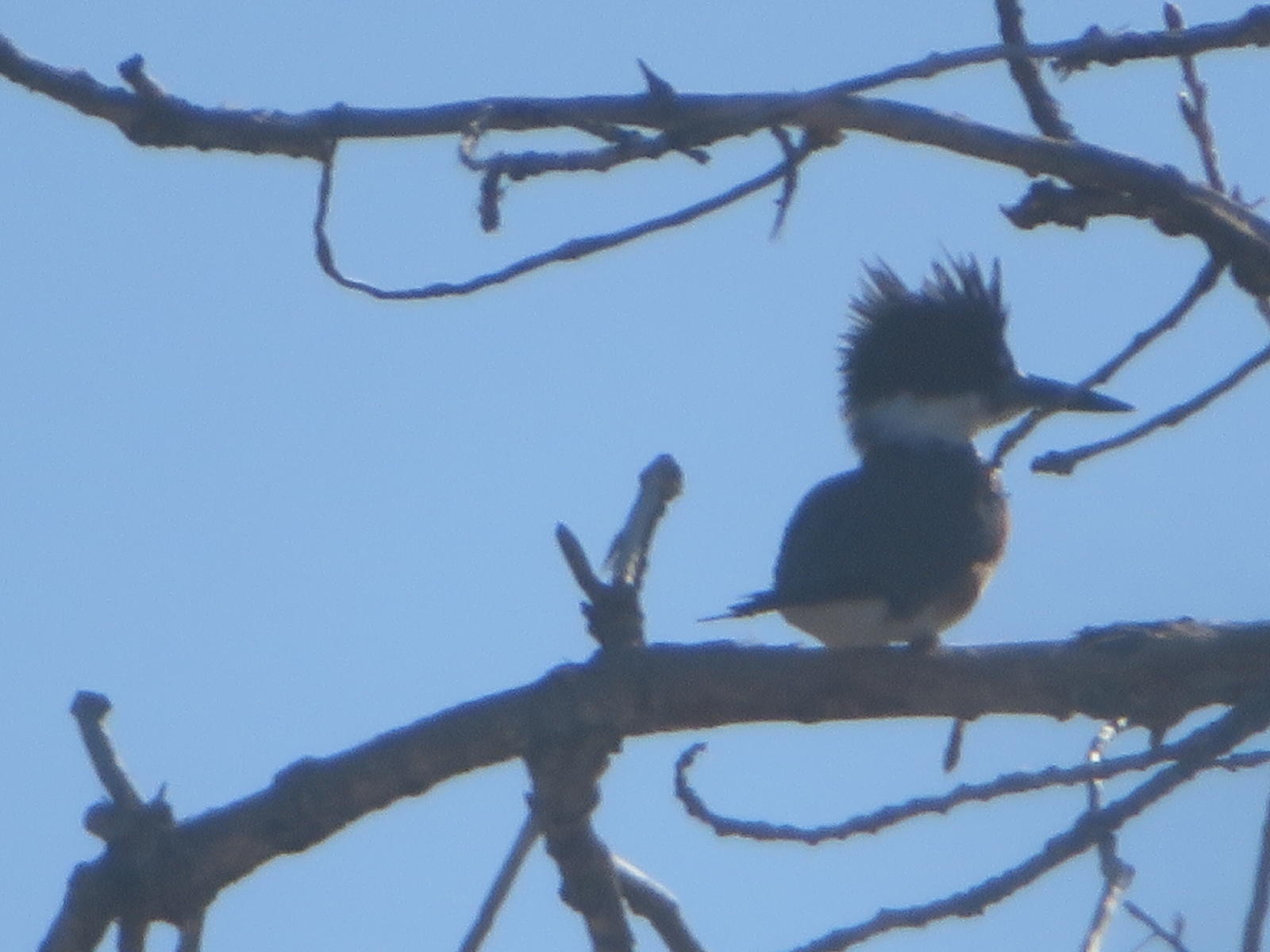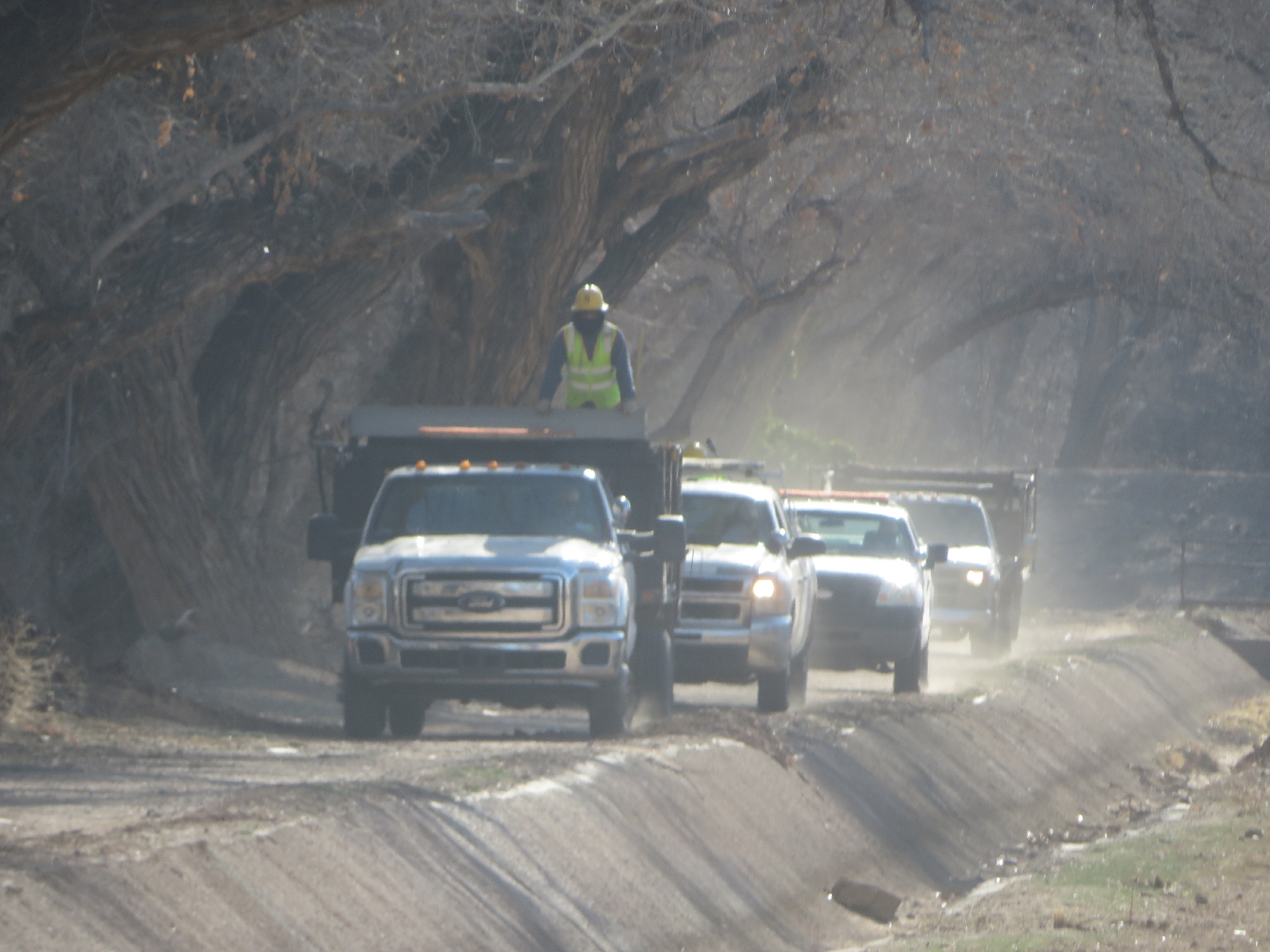"the flower is the poetry of reproduction. It is an example of the eternal seductiveness of life."
Jean Giraudoux
Spring is the time of buds. Flowers come later with exuberance, but also with more variety. Some are raised, or even nurtured, while other blooms are ruthlessly suppressed. Persecuted plants adapt and often thrive, the adversity they face causing their descendants to grow with ingenious successful adaptations that spring from random chance.
The western bluebird is a small thrush like species that in New Mexico lives year round feeding on berries and insects, when available. They are often found near bird baths and have adapted to smaller forests like those found in Corrales near the river. At this time of year, territories are being established and nest sites are scouted out. Their songs are one of the many you will hear just after sunrise.
Belted kingfishers don't stay long in Corrales, they are heading north to breeding sites. They have a very distinctive chattering call. They are attracted here by the water flows and the small wriggling fish and arthropods found there.
Underground rhizomes are a form of vegetative reproduction that does not need sexual reproduction. This type of growth is fast and simple, but dangerous as all clones are susceptible to a lack of diversity, which helps protect against disease. Many imported plants that grow fast and also easy to look after are also invasive. The arid conditions of western Texas prevented many east coast plants from migrating to New Mexico, but giant cane is found in Corrales in patches, and have proven to be very difficult to eradicate.
Perennial plants use undergrown tubers, or bulbs to regrow after winter. Daffodils are clear sign of spring, the new shoots use stored energy to grow before any seeded plants can begin photosynthesis. The bulb contains a toxin that induces nausea in gnawing rodents.
Desert cottontails are smaller than most rabbits and thrive near to the lawns of human habitation. As long as there are sources of water, there will usually be rabbits nearby. Each female raises an average of fifteen babies each year in several litters, but the average life span is only 2 years. Juvenile cottontail rabbits are important food sources for the majority of animals that prey in the wild.
Last year was a bumper year for cottonwood leaf beetles. The term "bump" means to cause something to bulge and is a now obsolete verb, except in fecundity contexts like gestation and farming. Most years they are very inconspicuous, but they will occasionally have unpredictable population explosions that force stink and assassin bugs that hunt them to play catch up.
Predators in an ecosystem have to be adaptive in behavior to what their prey is doing. In ecosystems with low diversity, it is hard for predators to thrive in any numbers. So next time you see a spider remember that its a good sign of a healthy ecosystem. This particular trachela species is called a broad faced sac spider and is unusual in that it can survive by scavenging from dead spiders and insects. This allows it to survive in resource poor locations, like the inside of your house which as normally too hot and dry for insects.Some species of butterfly are present in normally harsh conditions of early spring. The low temps are a trade off because they will also face less competition and predation if they get out early. A novel case of the early bird gets the worm. Some butterflies use glycerol/water mixes in their tissues that don't freeze until the temperature is below -30 Celsius. Nymphalid butterflies have many adaptations for living in the cold. The question mark butterfly shown here actually shuns nectar as a food source, relying instead on juices from rotting fruit, dung, tree sap and carrion because flowers of most plants have not begun to appear yet. The family of butterflies know as "whites" (Pieridae) do use the brassicas like London Rocket, that flower in the early spring for their pupae.
The daytime temp ranges are still not wide enough for many lizards to come out and forage on the rapidly multiplying insects. However, the dense black basaltic rocks on the west side are ideal to bask on. While the temperatures are still cool, behaviors like this allow the lizards to take advantage of sluggish, easily caught insects. This particular species of lizard is noted for having many unusual behaviors, especially around mating.
Birds are highly evolved and can operate in a wider range of air temperatures. The lizards are an easy meal unless they are close to a bolthole and are being observant. Greater roadrunners are desert specialists who are carnivorous and opportunistic with many specializations to glean food from the desert floor. They are not often seen in the Corrales Bosque, because they are at a disadvantage to attacks from above from their more acrobatic brethren, such as the coopers hawks.
Once upon a time, ditch maintenance was a community organized event, and it (sort of) still is. Now, however the work is left to people paid and specialized in the art of hauling things to the landfill. Fleets of trucks and people clear drainage routes and remove obstructions as the start of the irrigation season gets underway.
Trees and growth of all kinds are obstructions to a well running irrigation system and some places are cleared religiously of fire risks, obstructions, and piles of debris. While some areas are left alone, many community sections are a little over-zealously cleared of everything living. Oddly, the early spring usually shows the problems with a good spring cleaning. Erosion, muddy conditions, blowing dust and strong winds are all reduced by having tall trees around to intercept the winds and the rains. It feels odd to see people replace trees with less effective lawns, but we all prefer to achieve tasks that have worked for others over unproven solutions that might be improvements for the future. Obviously, we have clearly failed to learn the lessons of the dust bowl era. Those who forget history and all that.
While trees and a natural approach to outdoors care are better for us all, it will take time for the subtle effects of community, ecology, and common sense to win out over the pressures of commerce and conformity that migration from city suburbs into the countryside brings with it. Corrales is not a greenbelt project of cities such as Rio Rancho and Albuquerque. We are unique and special and we can do a better job of showing this to ourselves as we all navigate life's challenges.














